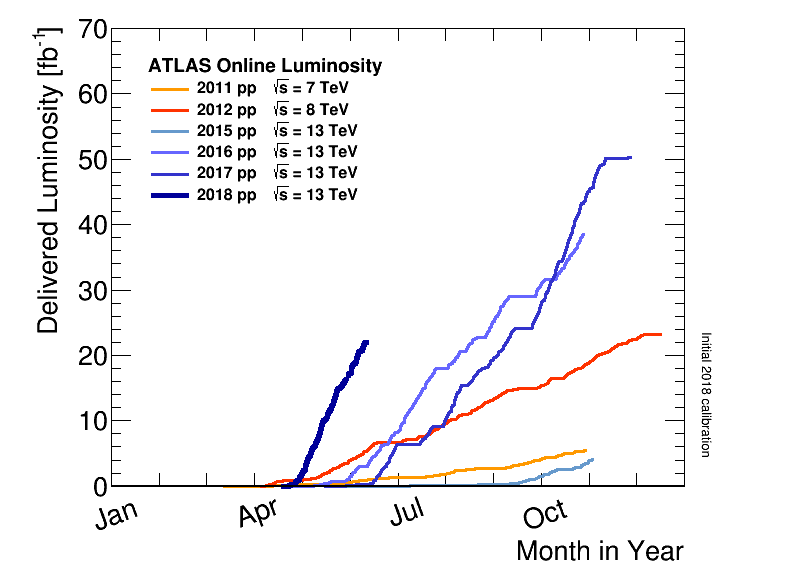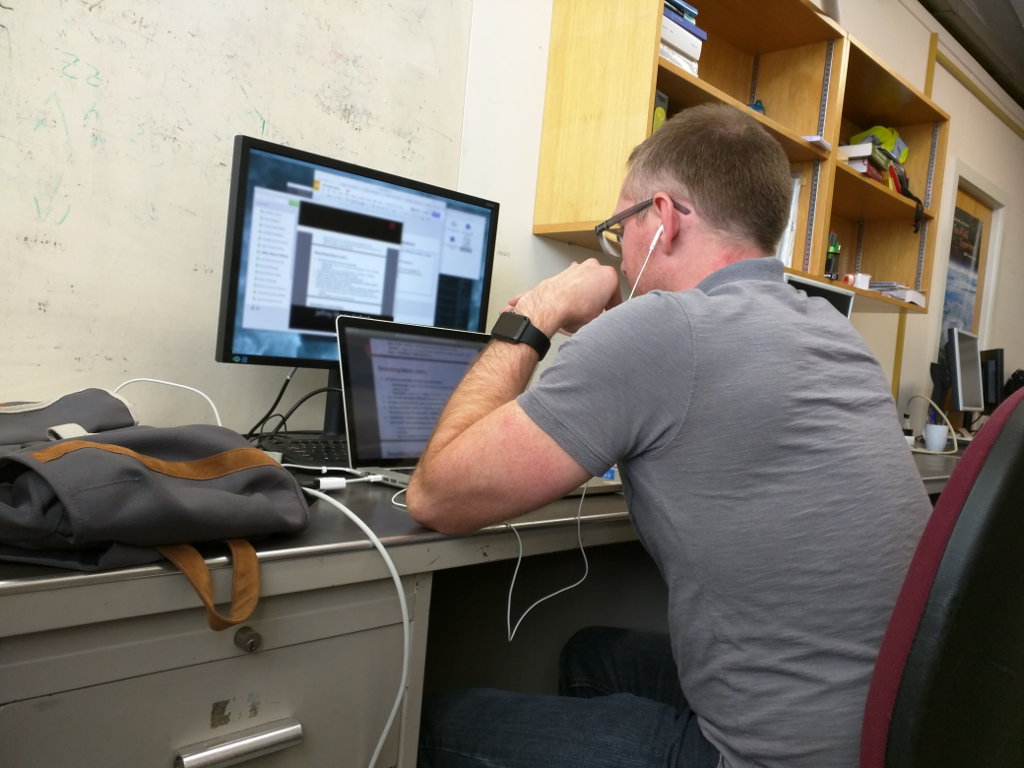I became enamored with physics in high school. I remember exactly the moment it happened. The moment it happened was after watching the documentary, “The Origin of the Universe”, hosted by science writer Tim Ferris. Four forces, binding the universe together, uniting at a colossal energy scale the first glimpses of which (Electroweak Unification) we have been privileged to witness? I had to know more.
What drew me into physics was the challenge of gravity. What drove me into experimental particle physics was, ironically, also the challenge of gravity. Gravity, most familiar of the four forces, was the most mysterious. It could be, like electromagnetism or the weak force, the result of an exchange of particles. Or, could it be something else? There was no evidence either way. At night, after finishing my homework, I started scribbling really stupid ideas about gravity in a notebook. REALLY STUPID. I mean, blindingly ridiculous.
Mostly, what I scribbled in the notebook were the start of ideas or an equation from a general physics textbook that described some aspect of gravity. Then I would struggle to use the equation. I struggled because I had no calculus, and I was generally bad at math. Better than my peers, perhaps, but better than your peers is sometimes not good enough for the cosmos. Nature demands more.
In college, I remember my excitement about my plan of attack. I would learn all the math I needed, take all the classes required, and eventually come to a point where I was intellectually capable of understanding what was known about gravity. From there, I would go forth and think about the unsolved problems. I was even more excited when, in either my sophomore or junior year, I went to the Yale bookstore to buy my course books. On a shelf, near my required purchases, was a huge black book with a flexible cover, its title standing out boldly in thick white lettering on the (more than) two-inch-wide spine. “Gravitation,” it beckoned.
I bought it. It was $80, maybe more (I recall it cost a lot for me at the time). I got home and excitedly started to read. It was then that I realized I was not cut out for gravity. For every Greek symbol sitting astride some other symbol, like an angel on the shoulder of an innocent algebraic scribble, was a Roman symbol sitting at its opposite shoulder, a little devil index demanding more dimensions of understanding. At the foot was another index – some of the beasts carried two – four! – indices. I hadn’t the intellectual capability to contain this information in my head.
This was on page 2, or so. This was just the legend to the notation in the book.
I tried, just as I would try to read a string theory book two years later. I didn’t understand the math, and I hadn’t the background to realize the language of general relativity. Those things would elude me for several more years. I set aside gravity for the sexy allure of the J/psi, her two muons so deliciously simple to detect. I became a student of particle physics.
You could say that I’ve been quite content in particle physics, if hungry for a better picture of the universe than what’s been offered by string theory or quantum gravity. As a particle physicist, neither of these has been terribly attractive because of the vast gap between where we are, technologically, as a species and where one naively needs to be to see the consequences of those ideas.
OK, full disclosure time. When I showed up at CERN in 1998 for my first summer of post-undergraduate research with faculty at University of Wisconsin, I had a roommate and fast friend named Bob. Bob and I, whether by accident or on the purpose of the graduate school, were then assigned to the same office for two years while we took classes. We then went our separate ways professionally, him going from experimental into theoretical physics. We kept in touch, and through a series of conversations we had in 2003 and 2004 I became obsessed with the idea of using Upsilon mesons to look for dark matter and other new physics phenomena [1]. Bob and I are still friends and colleagues, and while we don’t always see eye-to-eye in physics I respect his ideas.
He has a paper on the arXiv now [2], which I think merits a first and and then a second look. It’s an intriguing idea. He posits, what if gravity is not a fundamental force to which we must constantly fit our notions of nature? What if gravity is a consequence, a consequence of a known phenomenon: superfluidity?
In the paper, Bob suggests something which has apparently not been suggested before: neutrinos, or any other purely weakly interacting particle left over from the big bang (so-called “relics” of the big bang), interact SO rarely and SO weakly that by now, their wave functions are bigger than the space between them – they are “non-localized”, in the language of quantum mechanics. Just like electrons in a superconductor, this means that these relics are in a super-state – a super-fluid, in this case. Like electrons in a very cold conductor, below the superconducting critical temperature, if there is any force that is even slightly attractive between them they will form bound states – pairs, in the simplest case. This is analogous to the electron “Cooper pairs” of superconductors which make them superconducting.
Neutrinos – fermions, with half-integer spin – will then form bosonic bound states with integer spin. Bob identifies one of these as having the same properties as the hypothetical graviton, the particle that is alleged to carry the gravitational force. Gravity emerges as a consequence of the electroweak force – thus the title of the paper.
He might be wrong. In fact, in seminars he’s given recently he says as much. He notes that the theory is testable and falsifiable, although I would bet that will take some work even with our available technology. I find the whole notion intriguing. Rather than appealing to some far off energy scale, or vibrating 11-dimensional objects, what if gravity is as simple as neutrinos in a superfluid state?
Maybe somebody will come along in the arXiv next week and knock the whole idea down. Maybe it’s “intuitively obvious” that this is wrong. I don’t know – I’m just a dumb experimentalist. But, I’ll say this: it’s an idea I’m actually excited about, one which merits close scrutiny and a lot of brain-storming. And yes, it might even be wrong. But so might string theory, and quantum loop gravity, and we exhaust intellectual capital on those.
[1] http://www.arxiv.org/abs/0712.0016
[2] http://arxiv.org/abs/0812.2696




One thought on “Gravity, in daylight”
Definitely a paper I’ll be reading soon! I knew neutrinos had potential, but I didn’t think they could be responsible for gravity too.